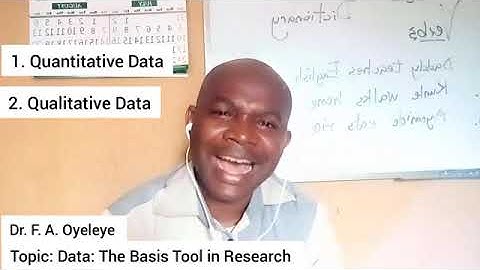Motivation is generally described as the force that drives us to pursue a goal (the desired outcome). Motivation is a starting point for all choices (e.g., careers, spouses, hobbies). In general, we are motivated to maximize pleasure and minimize pain (Touré-Tillery & Fishbach, 2017). However, people are driven by more than just carrot/stick motivators in pursuing their goals (Sharot 2017). - External incentives. If you want people to do something, emphasizing rewards (e.g., money) is powerful. But the external rewards encourage a focus on short-term results at the expense of long-term ones.
- Avoiding losses. We like to win, but we hate to lose. We feel the pain of loss more deeply than we feel the pleasure of gain. For example, consumers are more responsive to a price increase than to decrease. Loss aversion produces inertia or status quo bias, meaning a strong desire to stick with your current status.
- Hitting “rock bottom.” The concept of “hitting bottom” suggests that people must “hit rock bottom” before they may change. In the alcohol research field, “hitting bottom” is considered as an important motivating factor in seeking treatment (Kirouac & Witkiewitz, 2017). However, this tipping point may be different for each individual (e.g., losing job, spouse, and home, and experiencing serious physical problems).
- Intrinsic motivation. Intrinsic motivation refers to behavior that is driven by internal rewards (wanting to do something for its own sake). The focus is on the pleasure that arises from the act of doing something rather than achieving some ultimate goal. As people age, they pursue intrinsic goals and disengage from external-oriented goals. They choose goals that reflect their deeper interests, rather than external pressures (Ryan & Deci, 2017). This may explain why older people are happier.
- Maintaining a positive self-image. People are motivated to be perceived favorably by themselves (e.g., kindness). Our actions offer a window into our personality and preferences. For example, giving money to a panhandler, or changing Facebook profile photos to honor the victims of some new tragedy.
- Self-validation. People are also motivated to verify or confirm their existing self-views. That is why we prefer to associate with those who see us the way we see ourselves and avoid those who do not. For example, being with a partner who confirms your self-view as a spouse makes you feel better about yourself.
- Curiosity. Aristotle maintained that “all men by nature desire to know.” We are hardwired with the desire to learn and explore the world. Curiosity is viewed as arising when attention becomes focused on a gap in one’s knowledge. The curious individual is motivated to obtain the missing information to reduce or eliminate the feeling of deprivation. Once we are told what we do not know, we want to know. The opposite of curiosity is boredom or disengagement.
- Autonomy. People like to feel in control. We are biologically wired to seek control. It makes us happier and healthier across a number of dimensions. So giving people a sense of control (having options) is a powerful motivation.
- Current mood. There needs to be a match between the guidance (e.g., health messages) we are offering and the current mood of the individual in front of us. For example, when people feel threatened, they are much more responsive to negative information. Being in a bad mood primes a person to think about negative things. In contrast, people are much likely to engage in boring tasks when they are in a good mood. So align what you have to say with the other person’s mood.
- Other people. We are social creatures, and we care about other people’s opinions. We are driven by the desire to earn the respect of our fellows. People prefer achievements that are validated, recognized, and valued by other people. Approval is a prerequisite for forming and maintaining social bonds. When people are asked what pleasures contribute most to happiness, the overwhelming majority rate love, intimacy, and social affiliation above wealth or fame, even above physical health.
In sum, people are a mix of motivations. They are motivated by different needs and desires. These various motivation sources help us to appreciate the complexity of how to motivate human beings. References kirouac M. Witkiewitz K. (2017), Identifying “Hitting Bottom” Among Individuals with Alcohol Problems: Development and Evaluation of the Noteworthy Aspects of Drinking Important to Recovery (NADIR) Substance Use & Misuse 52(1):1-14 Ryan, R. M. & Deci, E. L. (2017). Self-determination theory: Basic psychological needs in motivation, development, and wellness. New York: Guilford Publishing. Touré-Tillery, M., & Fishbach, A. (2017). Three sources of motivation, Consum Psychol Rev. 1:123–134. Sharot Tali (2017), The Influential Mind: What the Brain Reveals About Our Power to Change Others. NY: Picador.
What is pain and pleasure theory?
The pain pleasure principle, developed by Sigmund Freud, suggests that peo- ple make choices to avoid or decrease pain or make choices that create or increase pleasure. The pain pleasure principle is the core of all the decisions we make. Be- liefs, values, actions and decisions are built upon this principle.
What motivates more pain or pleasure?
Conversely, the average person's motivation is about 80 percent avoidance of pain (moving away from what they don't want) and 20 percent pleasure (moving toward what they do want).
What are the 3 main motives that humans have?
Psychology's human motives theory distinguishes three fundamental human motives that are assumed to energize and drive behavior: the affiliation, power, and achievement need (McClelland et al., 1989; Schultheiss and Brunstein, 2010).
Who perceived the concept of motivation as pleasure seeking and pain avoidance?
The pleasure principle is a term originally used by Sigmund Freud to characterize the tendency of people to seek pleasure and avoid pain. Freud argued that people will sometimes go to great lengths to avoid even momentary pain, particularly at times of psychological weakness or vulnerability.
|




















